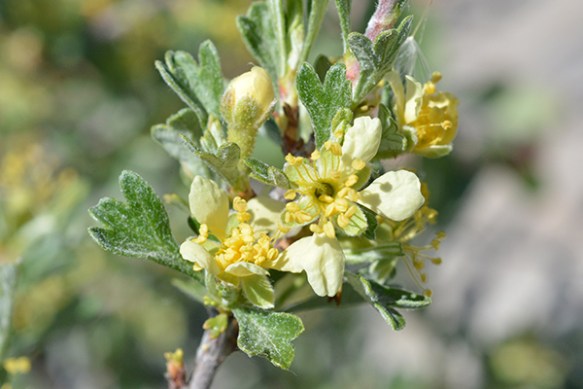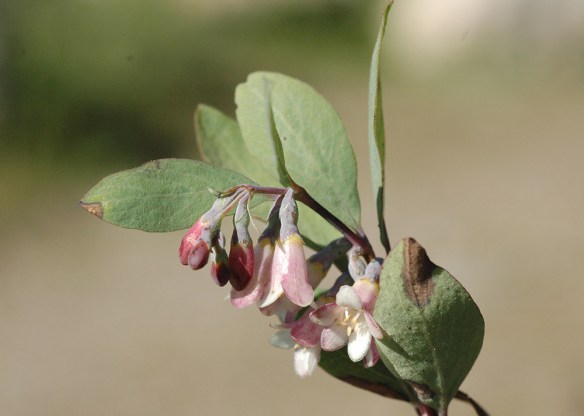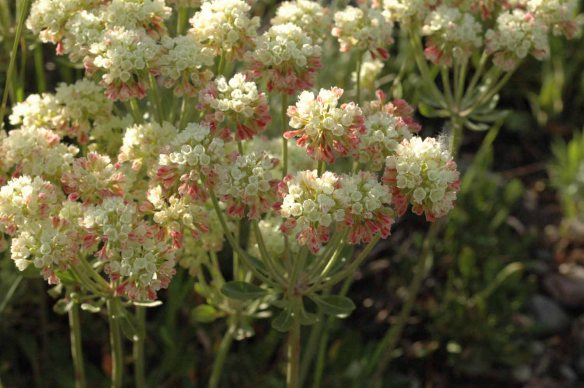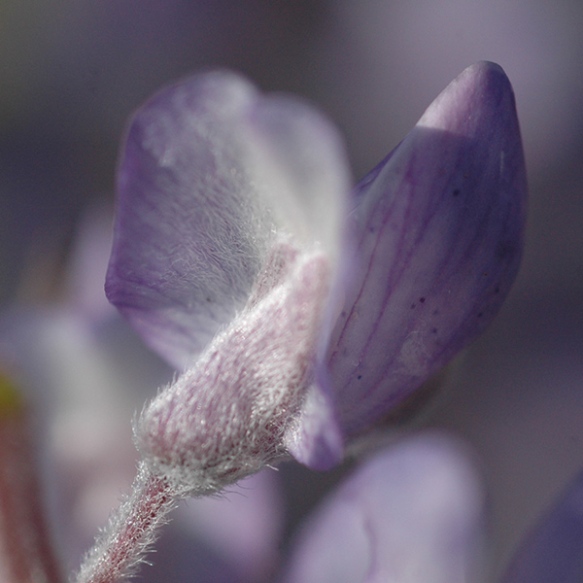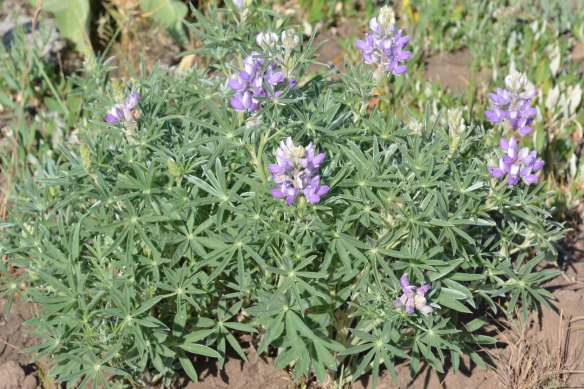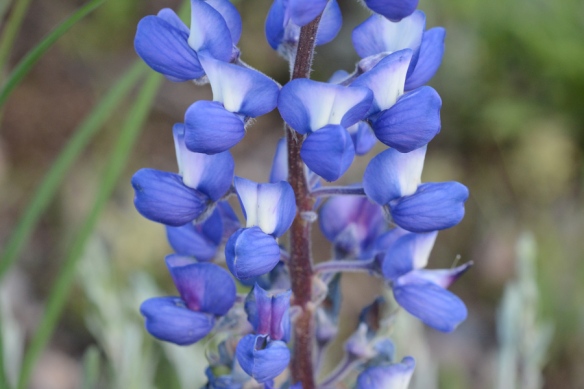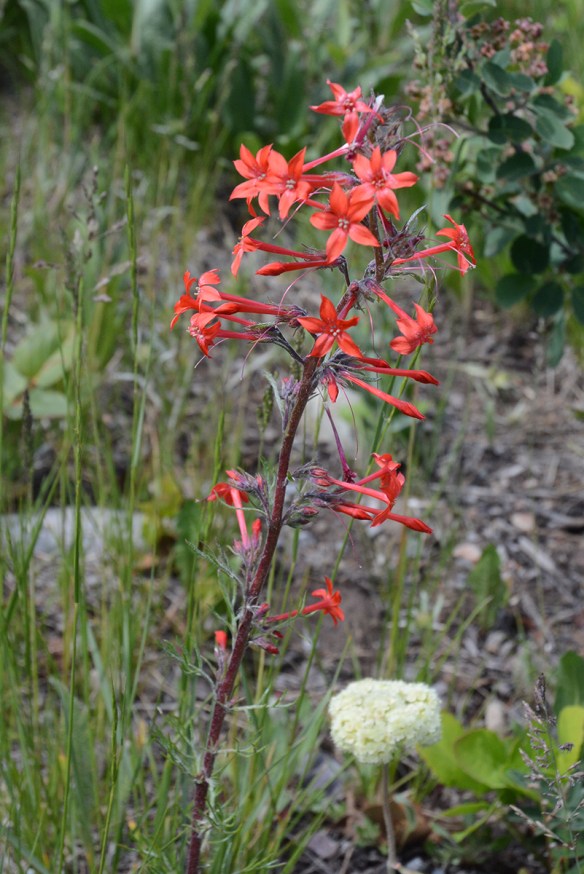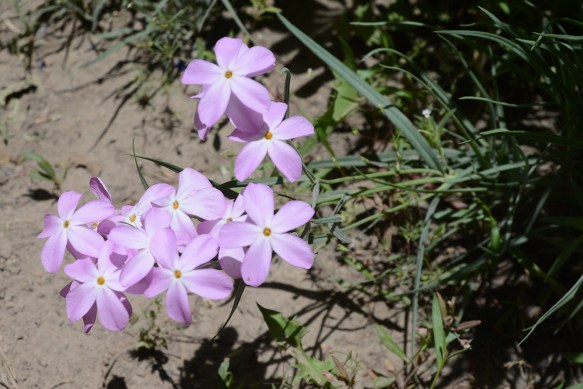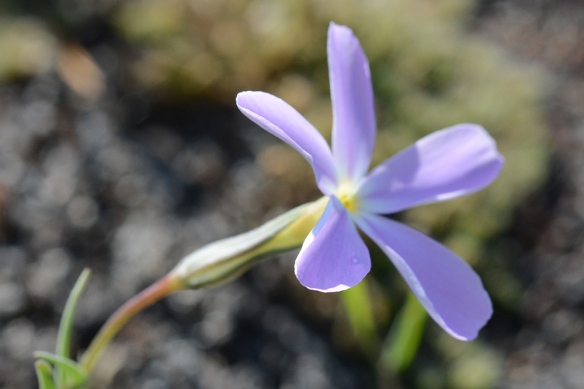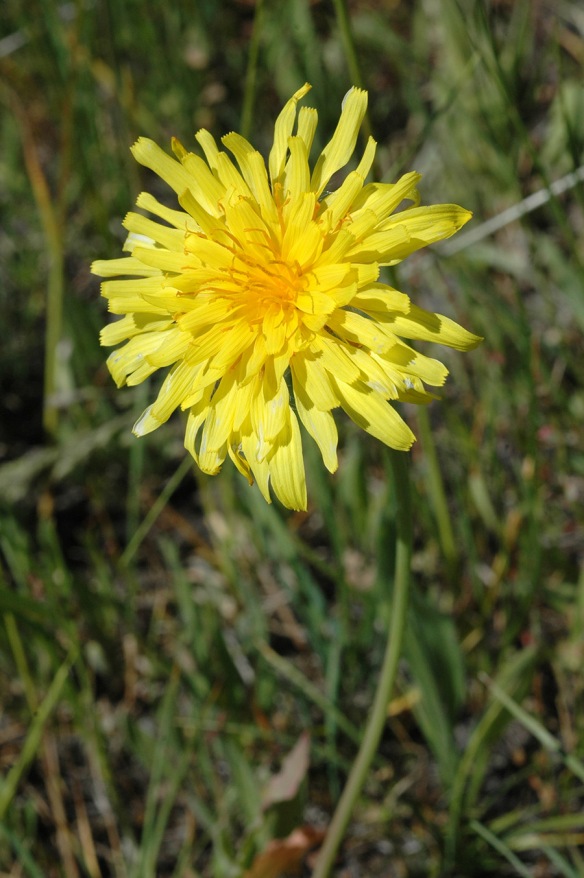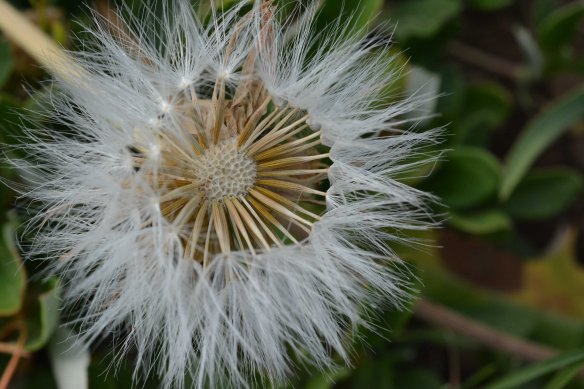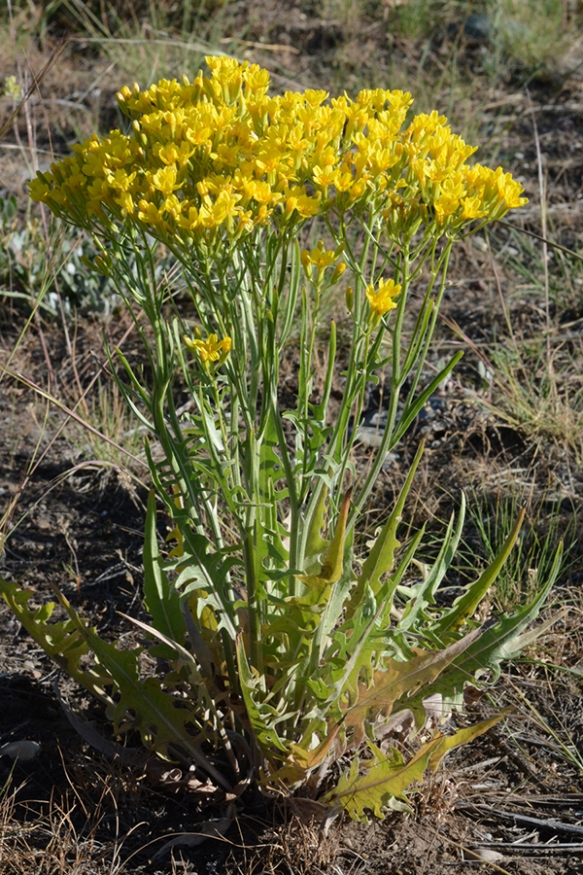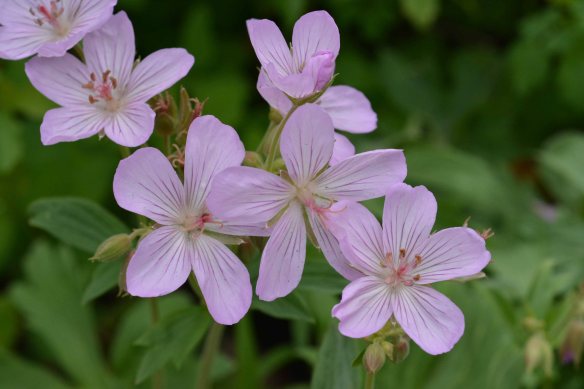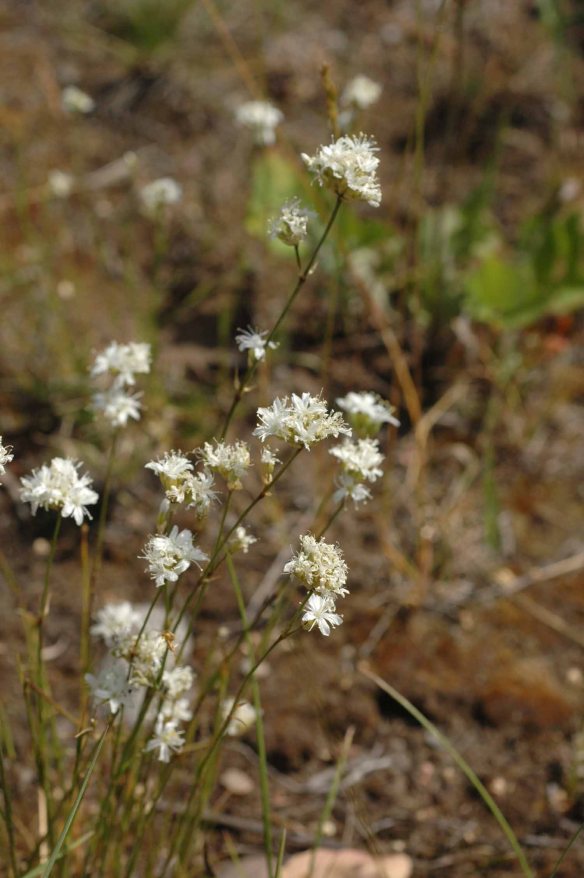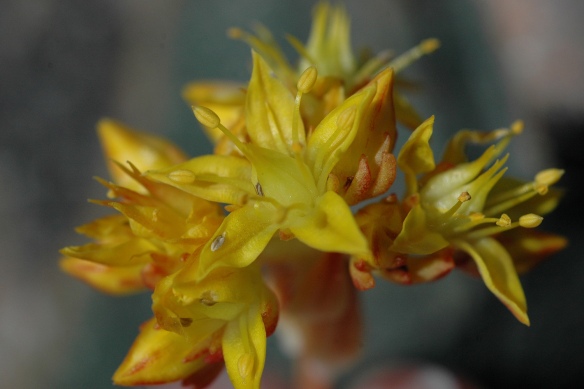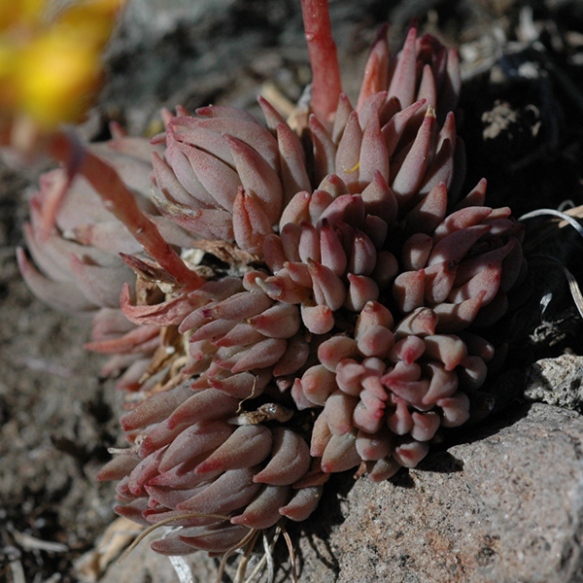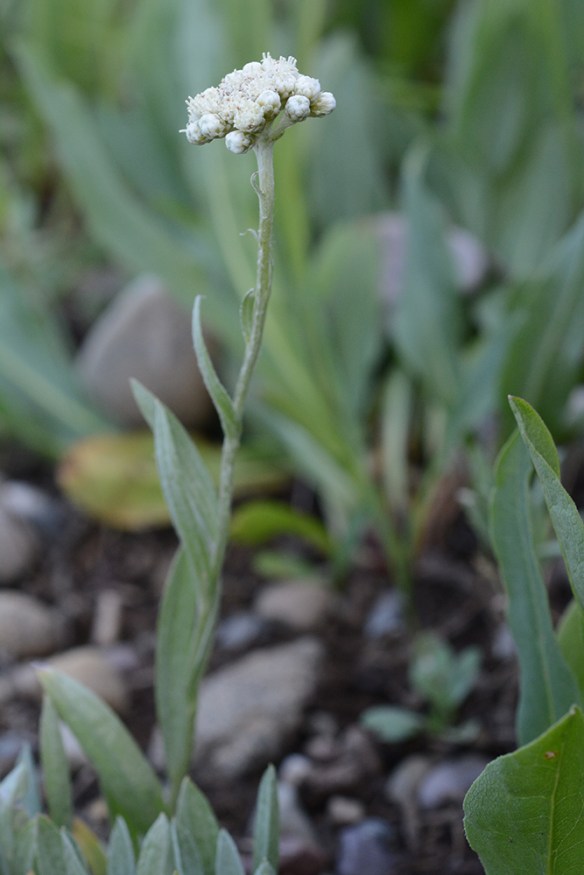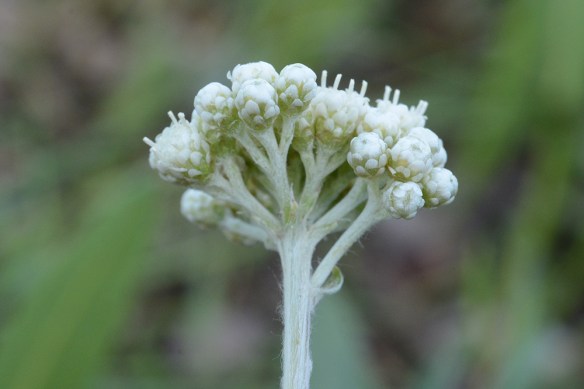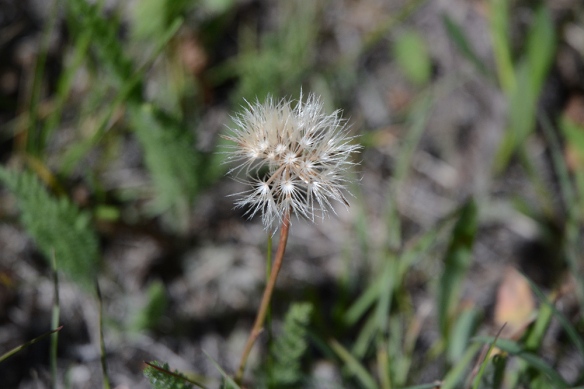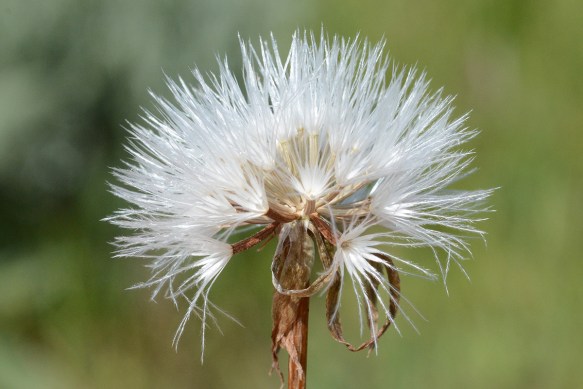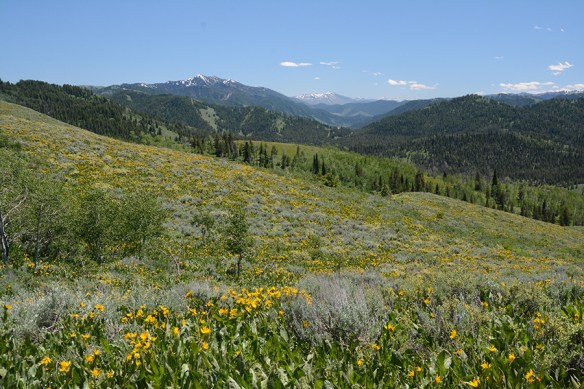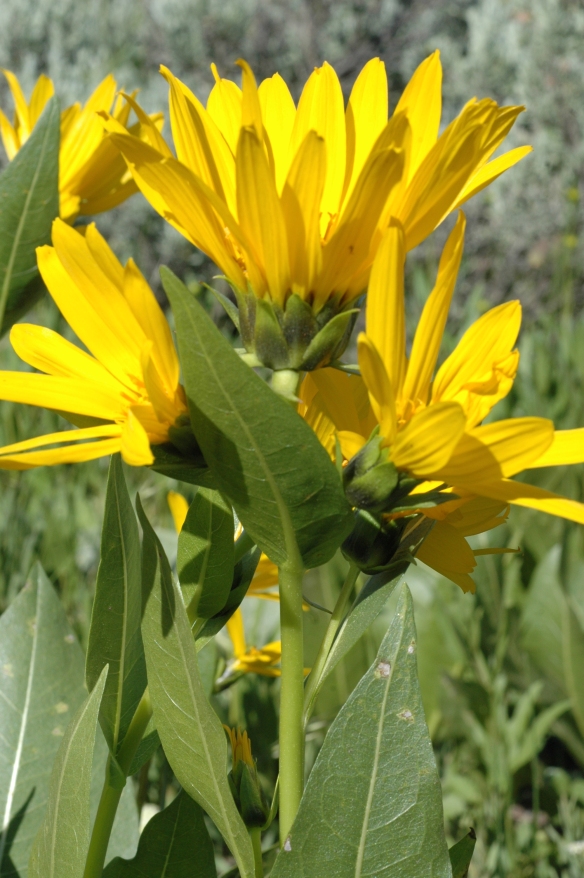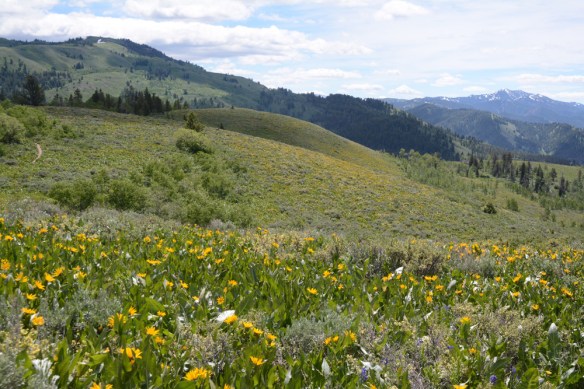
Wally’s World and Poison Creek Trails which loop around the shoulder of Munger Mountain encourage explorations into dry meadows and aspen groves. Wally’s World Trail runs along an open ridge overwhelmed by mulesears – Wyethia amplexifolia – and abundant fragrant Antelopebrush. This trail has many of the same sagebrush habitat plants noted in the recent 6.23.17 post (please see).
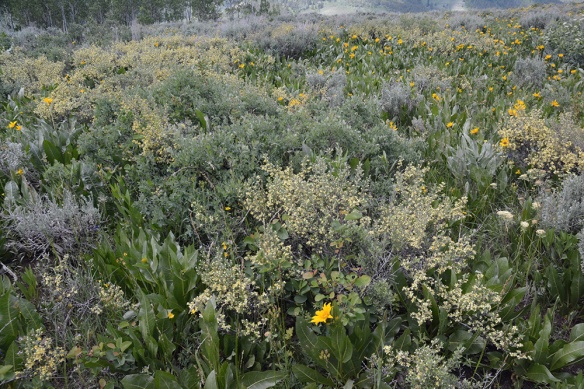
Antelopebrush – Purshia tridentata – mingles with sagebrush, snowberry, and mulesears along the ridge of Wally’s World, Bridger-Teton National Forest, off Fall Creek Road, Wilson.
Mixed among the sagebrush with Sulphur Buckwheat, Scarlet Gilia, Ballhead Sandwort, and Hawksbeards, are two different red paintbrushes. Paintbrushes – Castilleja spp. – are tricky plants to identify because of their modified flower parts and also because they hybridize and vary in color, leaf shape, and growth habit even within a given species. Interestingly, they also are hemiparasites.
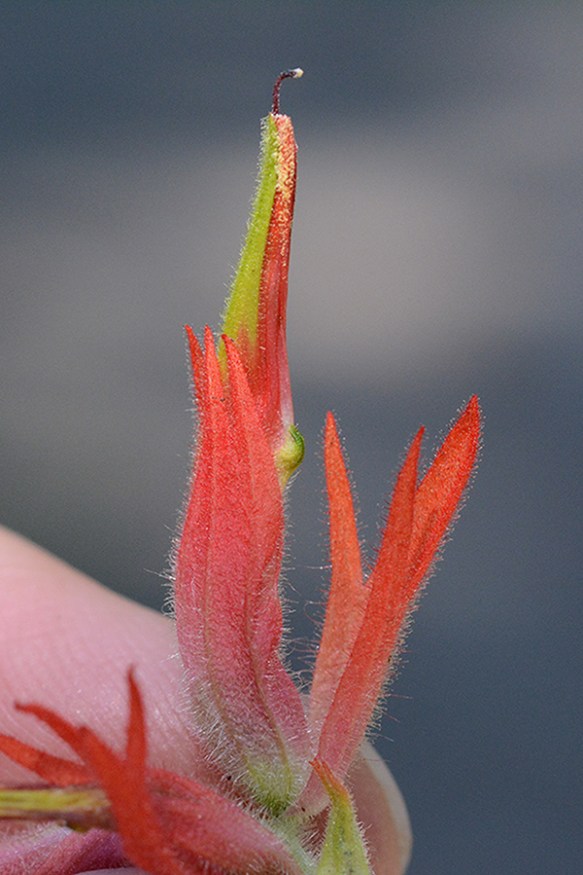
Paintbrush flowers are hard to identify in part because they have complicated flowers. A colorful bract (shown to right) is under each flower. Each flower has a colorful calyx tube which is lobed. It surrounds the usually greenish galea = tube of fused petals. The stigma and anthers are protected inside. Here the stigma sticks out from the green and red galea. If you are not in the national park and have plenty around, pick apart — dissect — a single flower and see what is what.
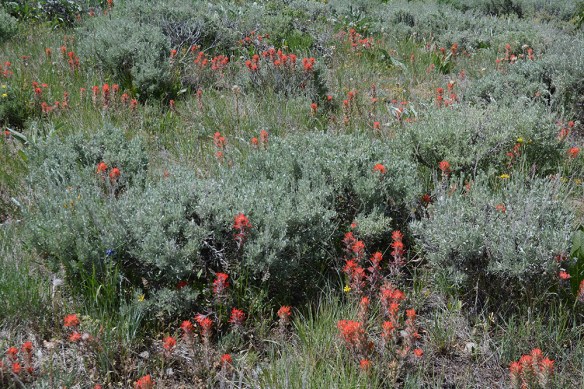
One of the red paintbrushes Northwestern Paintbrush – Castilleja angustifolia (C. Chromosa) – and Big Sagebrush – Artemesia tridentata var. vaseyana – mix together. There is more to this view than meets the eye….
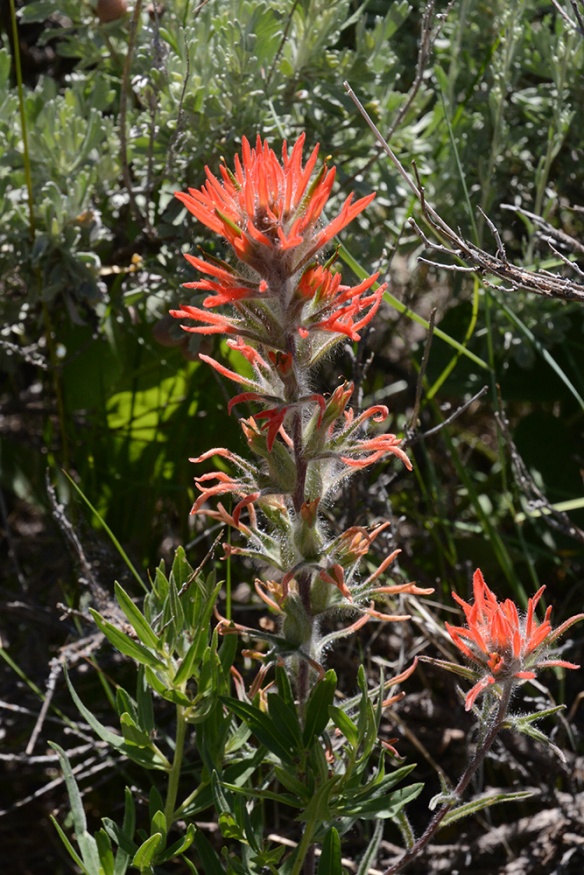
Many paintbrushes are hemiparasites on a variety of hosts: grasses, legumes, and also sagebrush. Northwestern Paintbrush – Castilleja angustifolia (C. chromosa) – attach “houstonia” to the roots of sagebrush and draw upon its water, nutrients, and some carbon to help the paintbrush grow more robustly. This hemiparisite doesn’t depend entirely on the host: the chlorophyll in the leaves enables the plant to photosynthesize sugars (which include carbon).
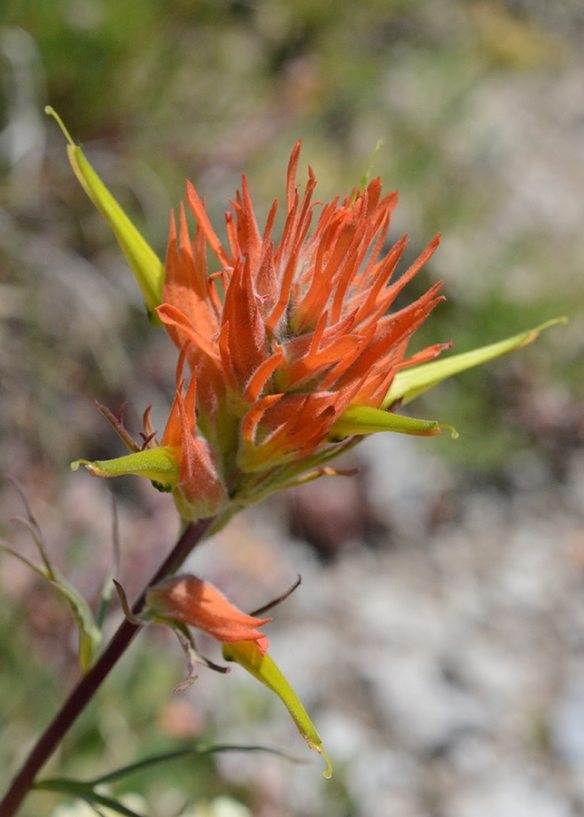
The state flower Wyoming Paintbrush – Castilleja linariifolia – is a hemiparasite on sagebrush as well. In this paintbrush, the bracts are divided into linear lobes, the calyx is orange, toothed, with a long slit down the front where the elongate green galea leans out. This reddish tubular flower is pollinated by hummingbirds.
Aspen Forests are rich places to botanize. 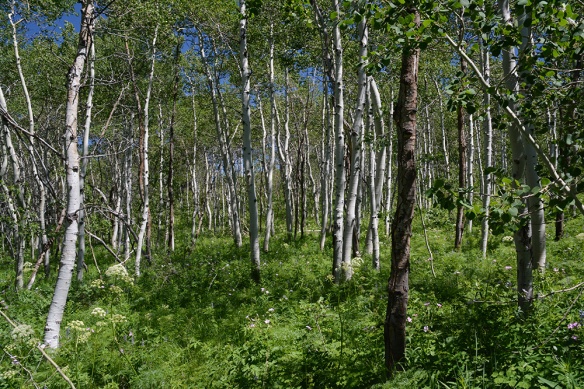 With light shade, greater moister, and more nutrients recycled from the deciduous aspen leaves, wildflowers are able to flourish at this time of year.
With light shade, greater moister, and more nutrients recycled from the deciduous aspen leaves, wildflowers are able to flourish at this time of year.
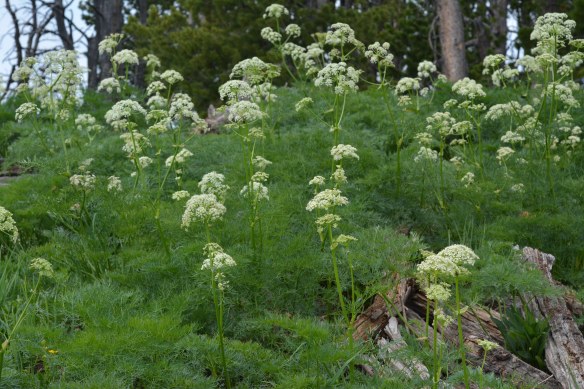
The 3- to 4-foot Fernleaf Lovage – Ligusticum filicinum – is beginning to flower. Note the large delicate leaves and umbels of tiny white flowers.
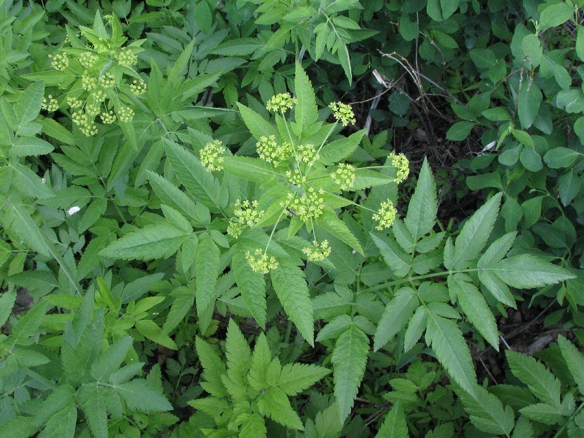
In the same family – the Parsely or Apiaceae Family, Sweetroot – Osmorhiza occidentale – has tiny greenish yellow flowers in umbels and also large divided leaves.
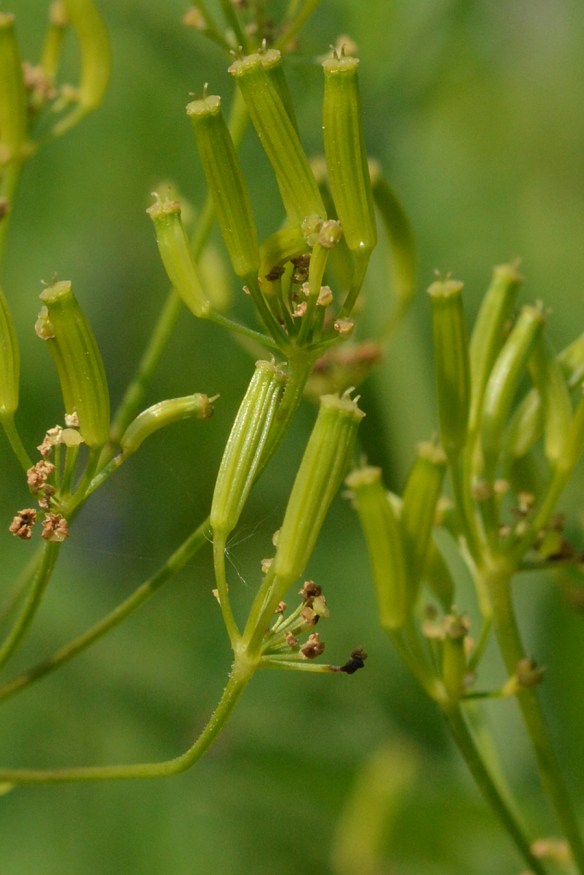
Sweetroot is just beginning to form its tangy fruit. It is in the same family as many herbs we use: parsely, caraway, dill, fennel, etc. While most are safe to taste, a few species in this family are highly toxic, such as poison hemlock.
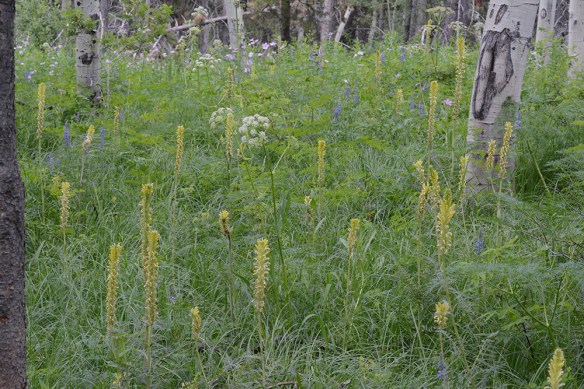
Also in the light shade of aspen groves or in open moist hillsides, are the yellow spires of Bracted Lousewort – Pedicularis bracteosa. These plants are also hemiparasites, operating like the paintbrushes, obtaining nutrients from surrounding plants.
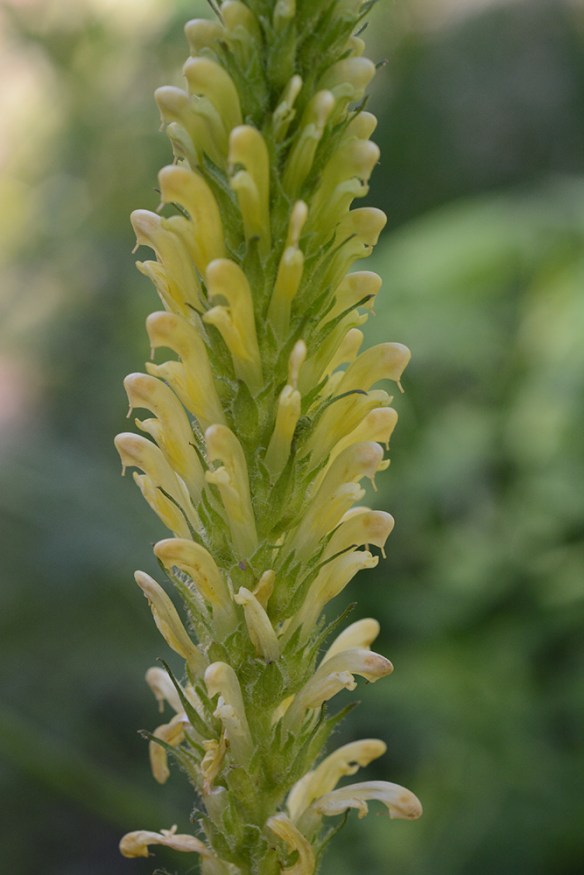
But perhaps equally interesting is its pollination. Louseworts have very specific pollinators: bees that can just fit into the flower opening. As they push inside for nectar, bees get a dusting of pollen on their bodies. One pair of bee legs is designed for combing off pollen and stashing pollen grains in “buckets” on the hind pair of legs. However, bee’s can’t reach the pollen lodged between their head and thorax. When a bee visits the next flower, a perfectly shaped protruding stigma taps into that crevice and bingo the pollen gets stuck to the sticky stigma. The plant wins and seeds can now form!
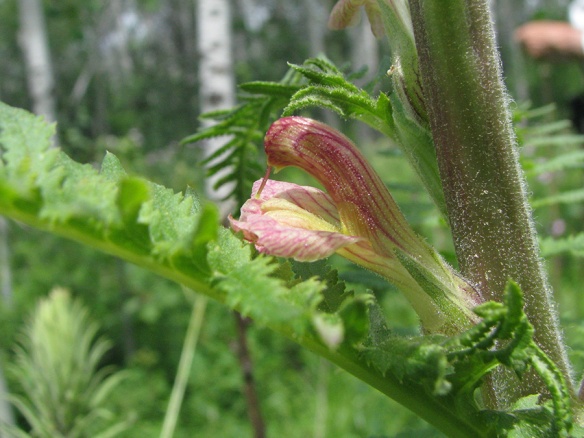
A much more unusual species, Tall Lousewort – Pedicularis procera – can be seen on Munger Mountain. The flowers are bigger and reddish, and the fern-like leaves are more frilly than the more common Bracted Lousewart.
Different species of lupines, paintbrushes, and even geranium are found in shadier woodland vs. open sage-covered habitats.
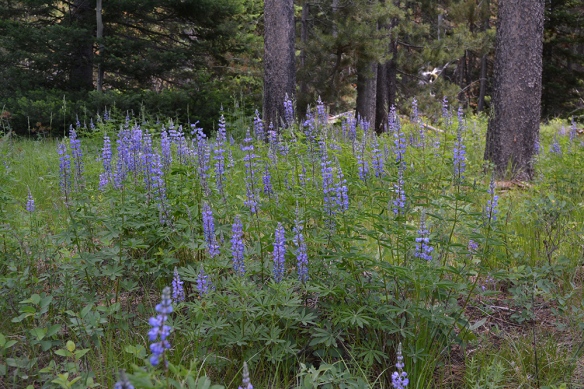
Silvery Lupine – Lupinus argenteus – is found most frequently in forests–aspen or pines.
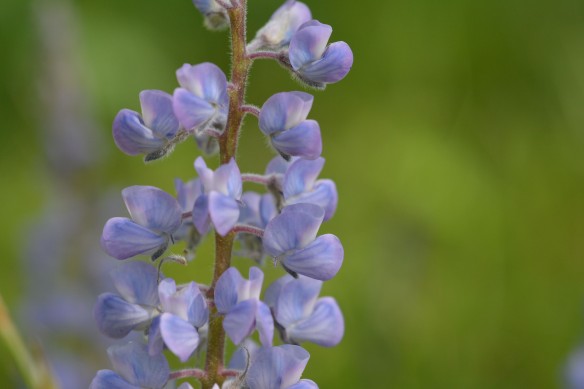
Silvery Lupine differs from the Silkly lupine, which is found in sageflats, by having many fewer silky hairs. The banner–the top petal which folds backwards–is smooth, not hairy. The flowers are slightly smaller and the leaves greener.
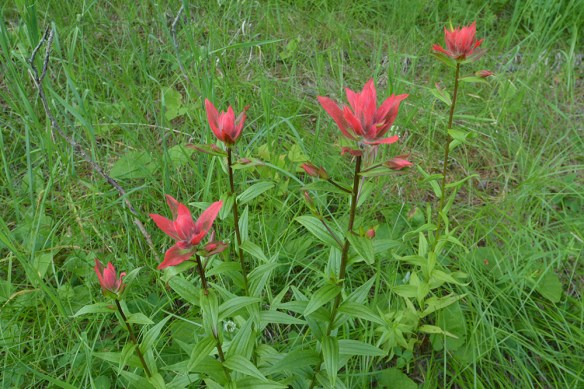
One-foot or more tall Scarlet Paintbrush – Castilleja miniata – has bright red, unlobed bracts beneath the red flowers. Also, the leaves are usually not deeply lobed as are the two red paintbrushes observed in sunny, dry locations.
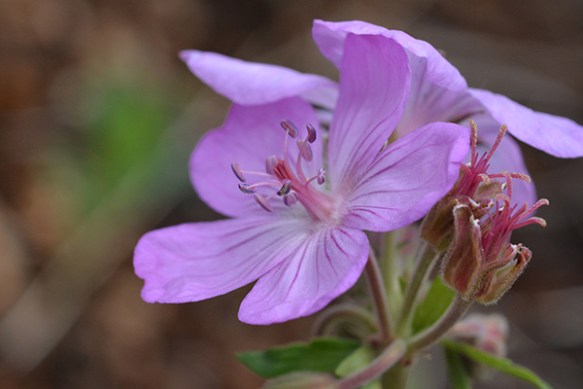
Sticky Geranium – Geranium viscosissimum – is abundant right now both on sageflats and in woodlands. Note the nectar guides — the deep pink lines leading into the center of the flowers. If you look closely with a handlens you can also see (and feel) the many sticky hairs on most parts of the plants. The hairs happen to be clear.
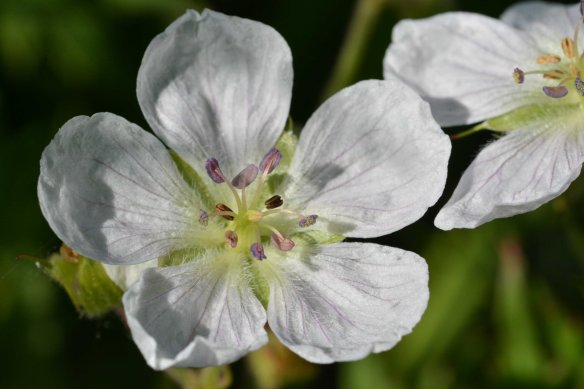
Richardson’s Geranium – Geranium richardsonii – is white and grows in moist sites. Its hairs are different!
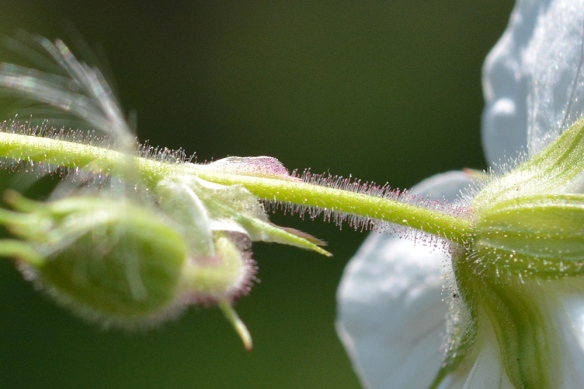
The sticky hairs of Richardson’s Geranium are purple-tipped. Think of a gooey forest of defense against tiny invaders.
Several members of the Buttercup Family (Ranunculaceae) do well in the shade. Many look very different and have very singular pollination behaviors from one another. Families are like that.
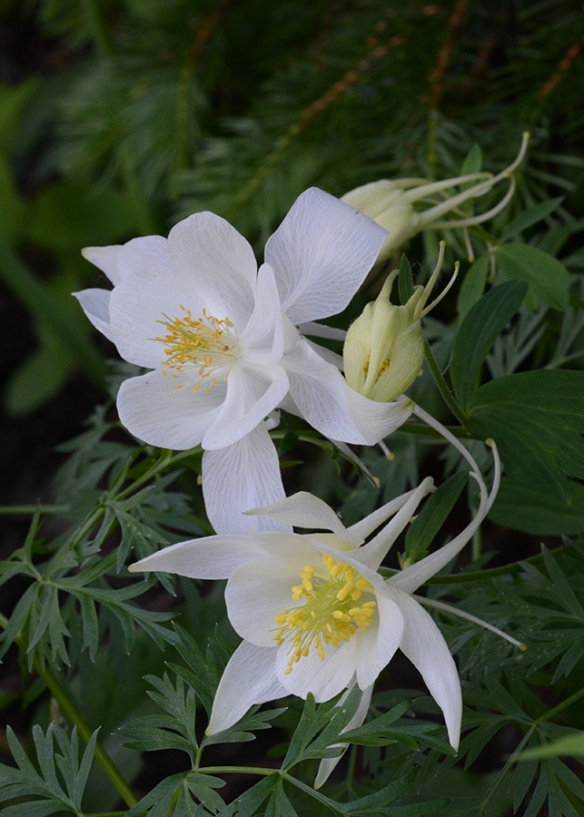
Colorado Columbine – Aquilegia coerulea – is very showy and a favorite to find. Elegant flowers have 5 flaring white petal-like sepals, 5 tubular petals that form 2”-long spurs trailing out the back, and many yellow anthers. Leaves are delicately dissected into 9 parts. These 6-24” plants are pollinated by moths and hummingbirds which have mouth parts that can reach the nectar way back in the flower “spurs”.
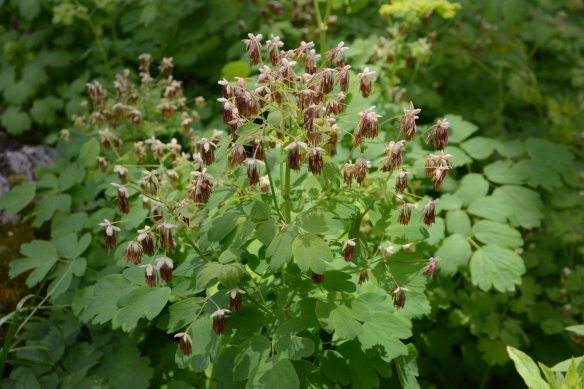
In contrast to columbine, the flowers of Meadowrue – Thalictrum occidentale – are very inconspicuous. It has male and female plants. Wind blows the pollen from the male anthers to the female stigmas on a nearby plant. This is a male plant.
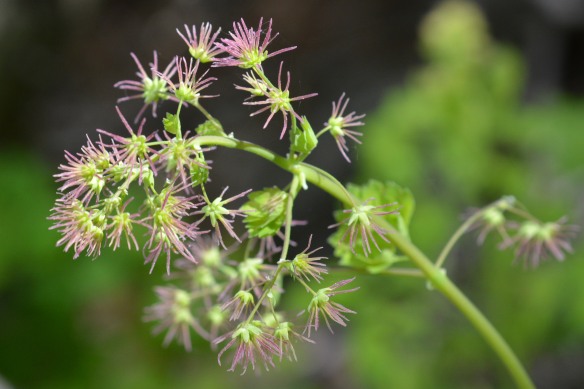
Female flowers of Western Meadowrue – Thalictrum occidentale. The pink stigmas stretch to catch pollen grains. As the wind cannot “see” there is no need for showy petals and such to attract pollinating birds or insects. Also, petals would get in the way of the wind.
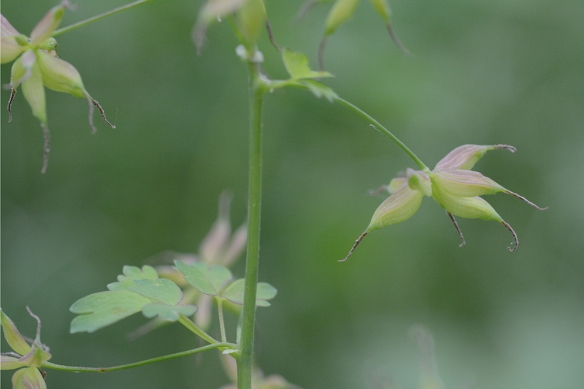
Fruits of Western Meadowrue are already forming. There are actually two possible meadowrue species T. fenderi and T. occidentale. The size and shape of the fruits help to distinguish the two species. This observer does not swear to the species ID as T. occidentale.
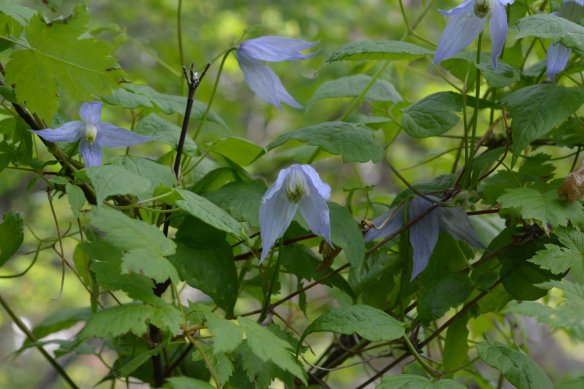
Yet another buttercup relative literally hangs out in the bushes. Western Clematis – Clematis occidentalis – is a vine which curls its tendrils around branches to support itself. The flowers nod downwards. Often it is hard for us to see more than the back of the blue flowers; however, low flying pollinators look up into the blue to see hundreds of gleaming white stamens – a treasure trove of pollen. Heaven.
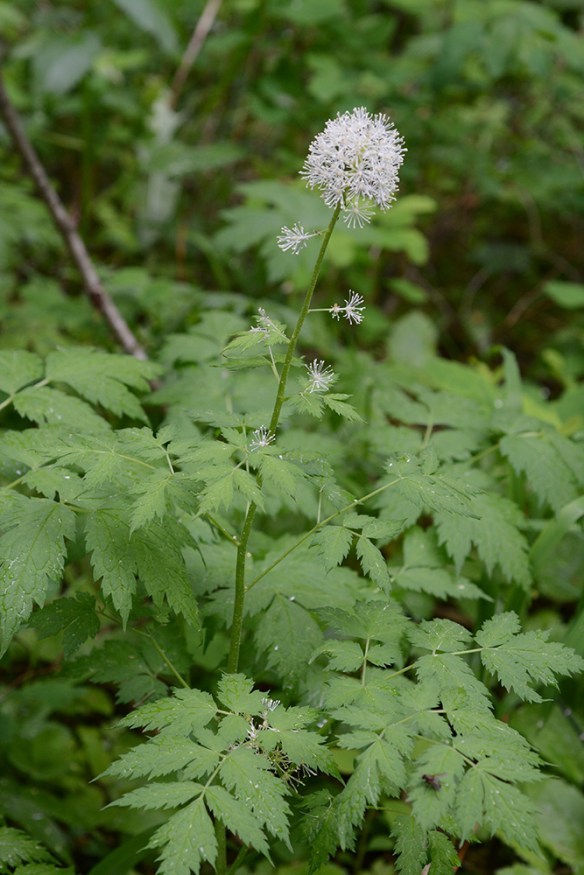
This cousin has many small white flowers whose numerous stamens (not petals) form a starry effect. Placed together, the flowers create an appealing show to small pollinators.

While delicate in appearance, the flowers will produce ruby red berries that are poisonous–they were used to make poison arrows. Hence the name Red Baneberry – Actea rubra. Bane in a plant’s name indicates poisonous. “Bane” means misery, misfortune, pain in the English language.
After looking at the photos, can you see any family resemeblance among the buttecup relatives? Hint: Look at leaves, look at stamens….(answer below)
Three additional flowers to look for in the forest at this time.
One is pretty obvious–reddish stems and spotted flowers:
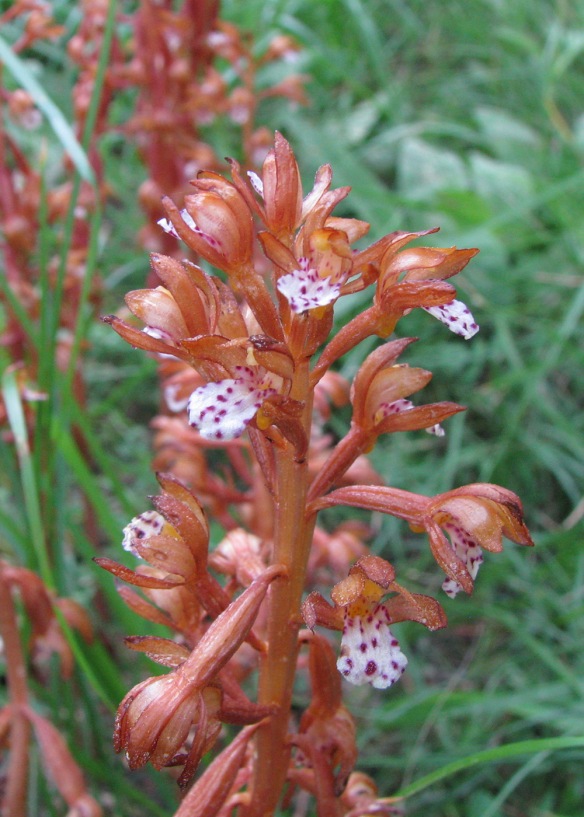
Spotted Coralroot – Corallorhiza maculata – is growing along trail edges in aspen groves. Coralroots do not have chlorophyll for photosynthesis and instead are connected to mychorrizal fungi which transport water, nutrients, and carbon from host trees. There are several species of coralroot in Teton County. This reddish species has white flowers spotted with red. Each flower has two tiny lobes on either side of the lowest petal (lip) and a bump (spur) under the throat .
Two are tiny, easily overlooked or even stepped upon!
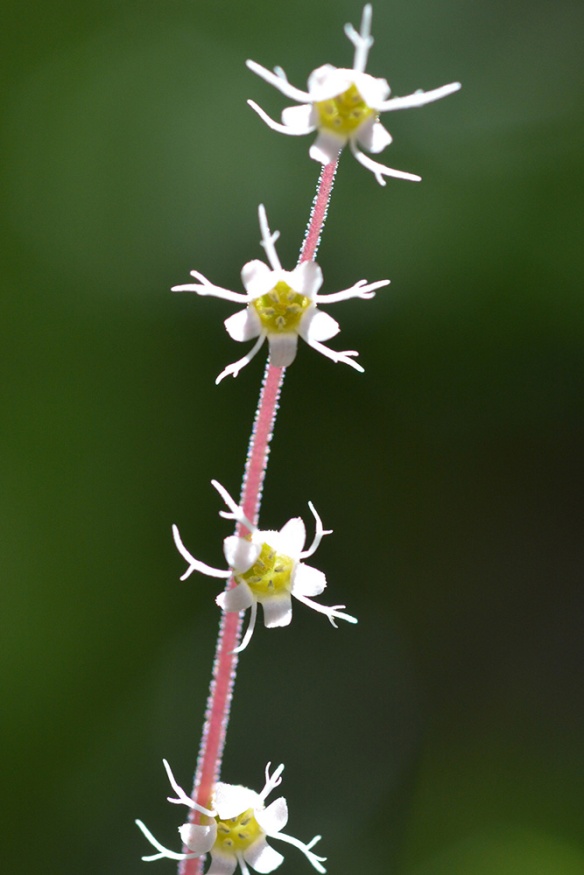
These merry flowers are barely 1/4″ wide and decorate slender 12″ stems. With the light behind them, Small-flowered Mitreworts – Mitella stauropetala – look like magical fairy wands.
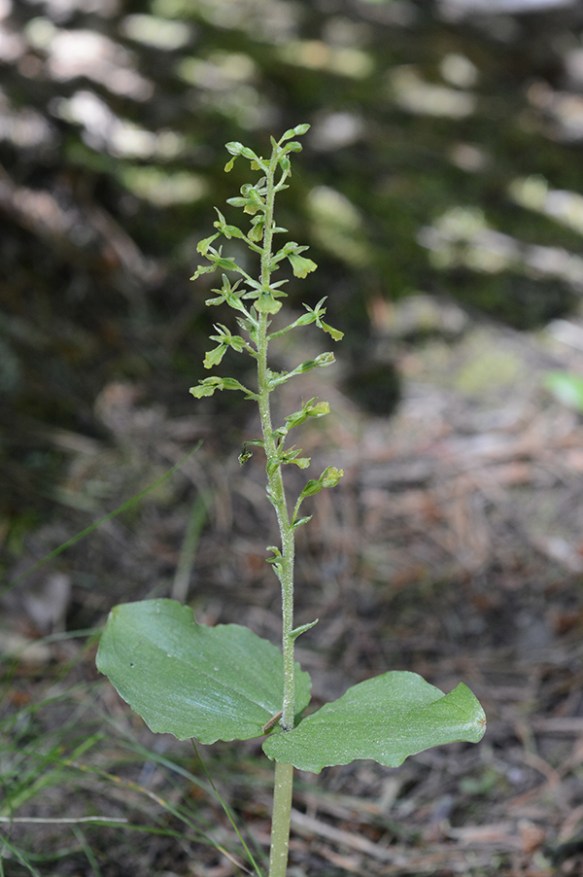
Northwestern Twayblade – formerly Listera caurina, now Neottia banksiana – is a 4-12″ orchid found in conifer forests (vs. aspen groves). We came upon a few hidden clusters today. It is found in Wyoming only in the Teton County.
There is no information on the pollination of Northwestern Twayblades–Listera caurina. However, one of its close relatives Listera cordata, which is also found in Teton County, has an amazing pollination mechanism that may be similar to this species. It is detailed below to encourge us to look for both species and do a close comparision,
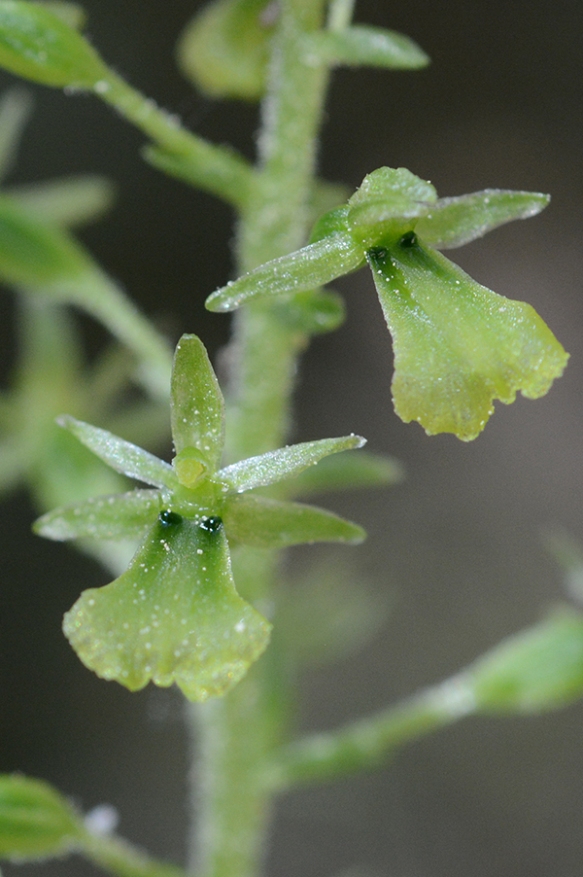
Pictured is Northwestern Twayblade. The story below is about its relative Heart-leaved Twayblade. First it is important to know that in orchids, the miniscule pollen grains are held in wads called pollinia…. Also the the anthers and pistil are fused into a single column or rostellum…. Attracted by the fetid odor and a bit of nectar, a small pollinator, such as fungus gnat, comes to the flower. Rooting around the lower lip for nectar, it triggers one of three pressure-sensitive hairs on the arching upper part of the flower–the rostellum–above it. At this point, the rostellum “releases a droplet of glue and the pollinia are instantly released to fall on the glue.” Off the gnat goes with the pollinia stuck to its body. Quickly, the tip of the rostellum unfolds to shield the underlying stigma to prevent self-fertilization in case the gnat returns. The next day, the wide stigma is uncovered and it arches up, receptive to the next gnat carrying pollinia from a different plant. As the gnat crawls under the rostellum for nectar, the pollinia sticks to the stigma and hundreds of pollen grains germinate to form hundreds of dust like seeds. Thus begins the opportunity for new generations. (Based on research of pollination of Listera cordata in California – Ackerman and Mesler, Am. Journal of Botanty, 1979)
Observing any twayblades in Jackson Hole, very carefully try to determine 1. odor, 2. presence of trigger hairs, 3. is the stigma exposed or covered? This could help determine if the pollination mechanisms within these two species are at all similar.
In any case, there are many more flowers to see! Keep on botanizing!
Frances Clark, Wilson, WY – June 28, 2017
P.S. Many Buttercup Family relatives typically have deeply divided to compound leaves; highly modified sepals and petals or sometimes none; and many, many anthers. Delphinium/larkspur, monkshood, and sugar bowls are all related, as well.

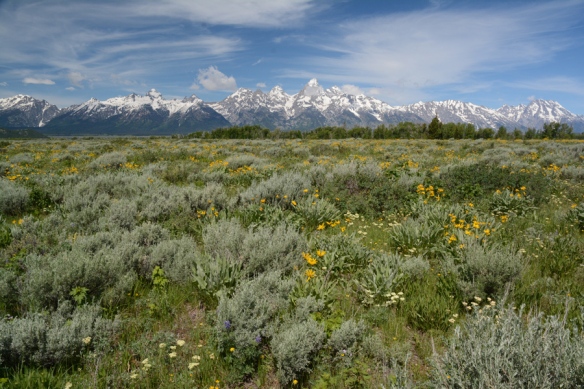 Many of us have been out frantically trying to keep up with the blooming flowers. The warm weather–in the 70s+–has keep flowers going and coming in the sagebrush habitat in Jackson Hole. Late spring favorites of Nuttall’s Larkspur, Arrowleaf Balsamroot, and Western Groundsel are fading in the southern end of Grand Teton National Park, but new favorites are unfurling fast.
Many of us have been out frantically trying to keep up with the blooming flowers. The warm weather–in the 70s+–has keep flowers going and coming in the sagebrush habitat in Jackson Hole. Late spring favorites of Nuttall’s Larkspur, Arrowleaf Balsamroot, and Western Groundsel are fading in the southern end of Grand Teton National Park, but new favorites are unfurling fast.